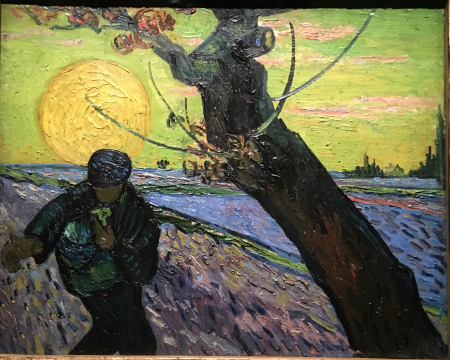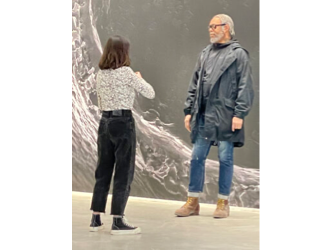Who among us hasn’t felt at least once, while walking by the sea, through a forest, or in the mountains, a kind of mystical impression, a communion with the sky and the earth, a sensation of being drawn towards the sublime absolute.
To relive that experience, but magnified many times, you should visit the Musée d’Orsay between now and the 25th June.
‘Beyond the Stars: The Mystical Landscape from Monet to Kandinsky’ comprises of 110 paintings explaining how artists have been on a quest for enlightenment through contact with nature.
The co-curator of the show Isabelle Morin-Loutrel even mentions ‘transcendence’. Here she spoke about the show’s aim:
https://www.youtube.com/watch?v=KzcjfcOPIRM
We find ourselves at the turn of the 20th century. The march of progress is transforming habits. For the Impressionists, one of the biggest practical changes was the ease with which trains could now carry them out of the city and ‘en plein air’ in the countryside.
But on a philosophical level, their response to the disruptive torrent of modernity is to seek out peace in the starry night (Van Gogh), in the reflections of the poplars in the water (Claude Monet) or in the zigzags of the melting snow of the mountain (a huge and stunning painting by the Dane, Jens Ferdinand Willumsen).
The exhibition’s astonishing list of credits demonstrates the pulling power of the Orsay when it comes to lending rare and precious works.
The selection here is almost too wide, from Gauguin to Klimt to Chagall in his Russian period through to the American Georgia O’Keeffe.
The exhibition also contains names of less famous painters such as Canada’s Tom Thomson and Sweden’s August Strindberg (1849-1912) better known for his plays.
The latter’s mind-blowing double-sided painting ‘Vague’ borders on abstraction as early as 1900-1902.
As a show, ‘Beyond the Stars’ is pure epicureanism.
The themes that punctuate the journey and could even structure the show, such as ‘Contemplation’ and ‘The Divine’, are in fact applicable to all the works in this very beautiful exhibition.
As a result, there is a lack of structure to the exhibition.
One of the most inspired rooms is dedicated to astral landscapes. Its zenith comes courtesy of the hallucinatory and brilliant Norwegian Edvard Munch who in around 1913 took the sun for his main subject, depicted as a ball of fire splashing what remains visible of the landscape.
Charles Baudelaire might have concluded: ‘Nature is a temple where living pillars sometimes let slip confused words. Man passes there through forests of symbols.’
Until 25 June. www.musee-orsay.fr
Donating=Supporting

Support independent news on art.
Your contribution : Make a monthly commitment to support JBH Reports or a one off contribution as and when you feel like it. Choose the option that suits you best.
Need to cancel a recurring donation? Please go here.
The donation is considered to be a subscription for a fee set by the donor and for a duration also set by the donor.














